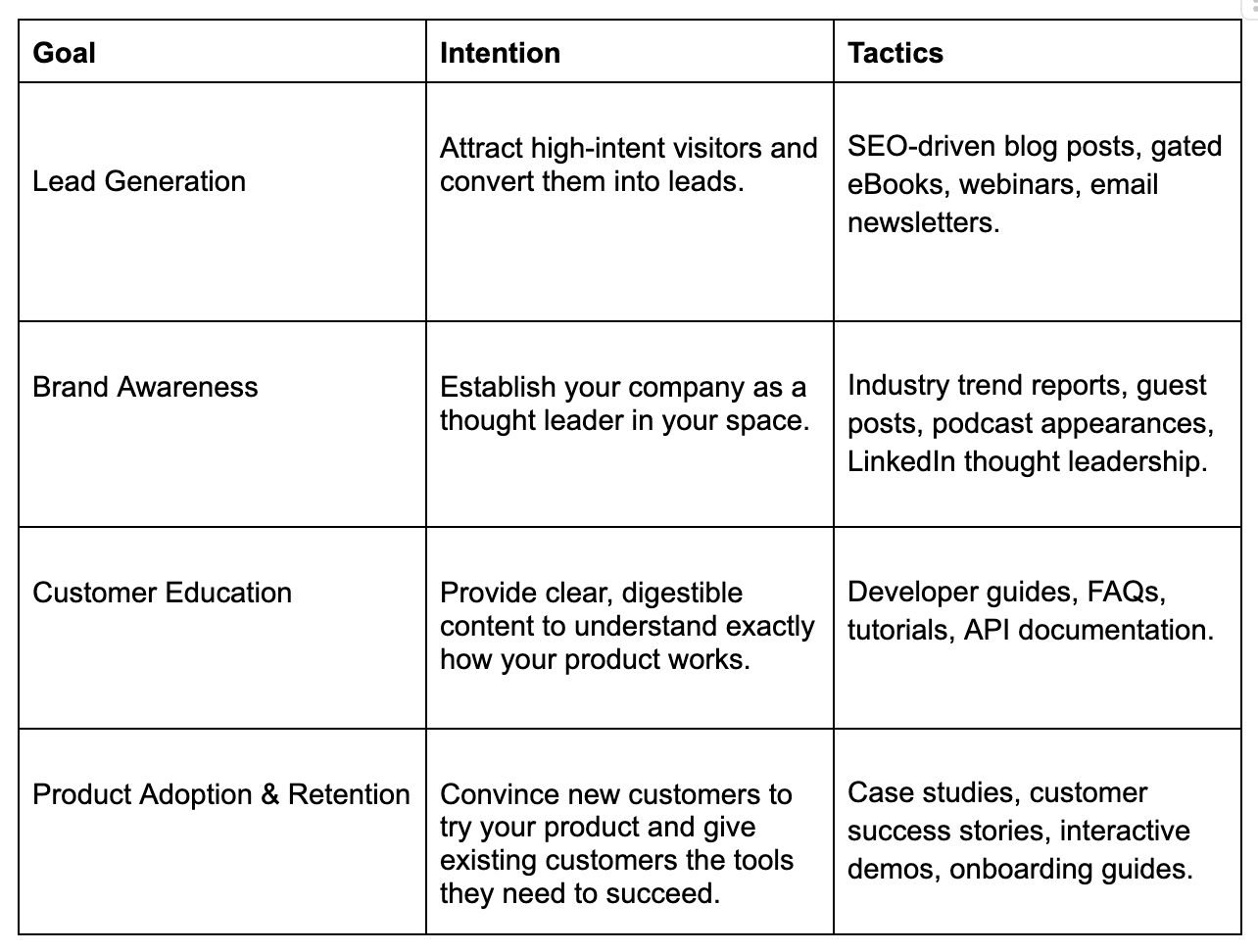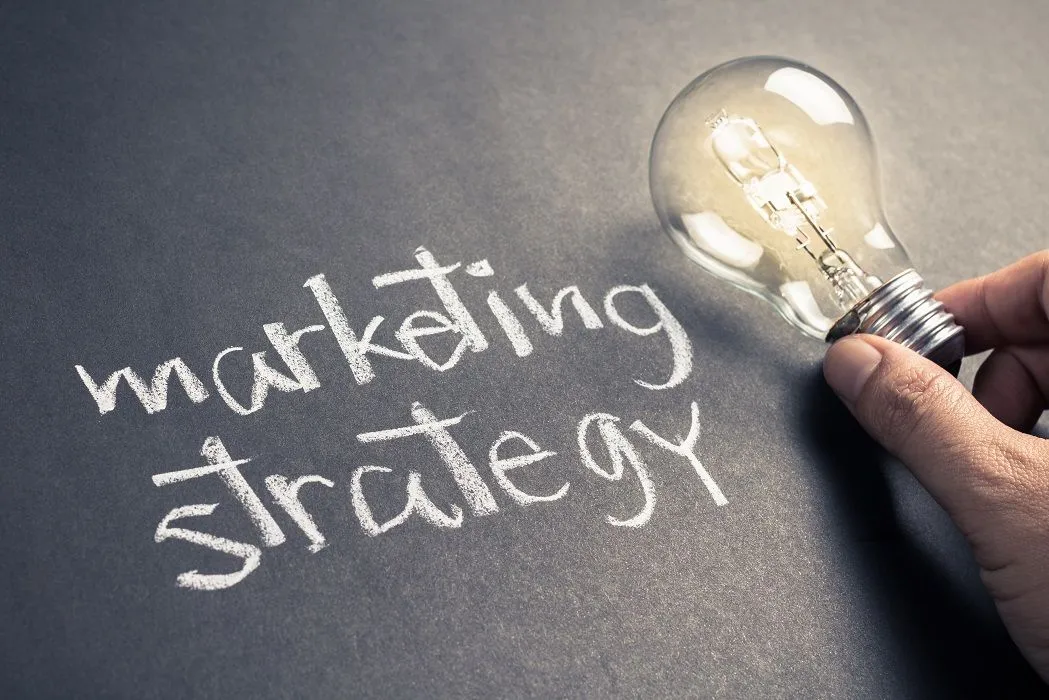Building a Strong Foundation for Your Tech Company's Marketing
You’ve built an incredible tech product—cutting-edge, efficient, maybe even revolutionary. But a product is only as good as its marketing, and therein lies the problem.
Your website traffic is a ghost town, your blog hasn’t been updated in months, and the only leads trickling in are not exactly your ideal customers. You know your solution can solve real problems, but no one seems to hear you.
Welcome to the all-too-common struggle of tech companies trying to create compelling marketing for their complex technical offering. Your messaging is filled with jargon and feels dry, and your biggest competitor (whose product is arguably worse) is winning the content game.
The good news? You’re not doomed to content mediocrity.
This guide will walk you through a step-by-step approach to crafting a high-impact content strategy—one that actually resonates with your audience, drives real business growth, and positions your brand as an industry leader.
No fluff, no generic marketing advice—just actionable insights that will transform your content from an afterthought into your best sales asset. Ready to make your tech content work for you? Let’s dive in.
Understanding Your Audience and Their Pain Points
If content is king, then understanding your audience is the secret council pulling all the strings behind the throne. Because let’s be real—you can write the most technically brilliant, SEO-optimized content in the world, but if it’s not solving real problems for your audience, it’s just noise. As we all know, the internet is busy, and attention spans are short.
So before you fire up your keyboard and start churning out blog posts, let’s take a step back and think about the people you’re writing for.
Tech buyers aren’t impulse shoppers. They’re not scrolling through their feeds at 2 AM, half-asleep, thinking, “You know what? I should probably invest in a machine learning observability platform right now.”
They’re intentional, highly analytical, and need content that speaks directly to their challenges if they’re ultimately going to make a purchase. If your messaging is too broad, too fluffy, or sounds like it was written for a general audience, they’ll be quick to move on.
First things first: you need to know exactly who you’re targeting, as well as their frustrations, their daily struggles, and what keeps them up at night (hint: it’s probably compliance issues or failing SLAs). When you tailor your content to specific pain points, engagement skyrockets.
How to Define Your Ideal Customer Persona (ICP)
A solid Ideal Customer Persona (ICP) isn’t just a fancy marketing term—it’s the blueprint for creating content that actually converts. Instead of guessing who your audience is, build a detailed profile that includes:
- Job Roles: Are you targeting developers who need clear API documentation? A CTO who cares about high-level strategy? A procurement team that only speaks in budget spreadsheets? Each persona requires a different content approach.
- Industries: A fintech security platform and a healthcare data analytics tool both deal with data security, but their compliance challenges, jargon, and priorities are wildly different. Tailor your content accordingly.
- Challenges & Pain Points: What problems are they actively trying to solve? Slow data pipelines? Friction in user onboarding? Sky-high cloud costs? Your content should position your product as the answer to their problems.
- Content Preferences:
- Developers want technical deep dives, tutorials, and API docs—not vague marketing fluff. They’ll need hands-on, practical content (e.g., documentation, SDKs, troubleshooting guides) and tend to push back on vague claims—instead looking for proof, benchmarks, and working code. If they don’t like your solution, they won’t advocate for it internally.
- CTOs need thought leadership, case studies, and high-level ROI discussions to make informed decisions. They care about scalability, security, and long-term impact and look for case studies, ROI reports, and strategic insights that align with business goals. They also look for thought leadership that positions your company as a serious industry player.
- Procurement Teams seek cost comparisons, TCO breakdowns, and risk mitigation content to justify spending. They focus on budget, compliance, and risk mitigation and want cost-benefit analyses, pricing transparency, and clear ROI documentation. If your pricing model is complex or hidden, expect friction in the sales process.
Bottom line: Different audiences need different types of content. The more precise your ICP, the more relevant (and successful) your content will be.
Tailor Your Content for the Tech Decision-Making Process
Tech purchasing decisions aren’t made in a vacuum. There’s usually an entire cast of characters involved in the decision-making process, each with different concerns. Your content strategy needs to speak to all of them.
Moral of the story? If you’re only creating content for one audience segment, you’re leaving money on the table. A well-rounded content strategy addresses all stakeholders so that by the time a deal reaches procurement, everyone is already on board.
Know Your Audience, Win the Game
Tech content that resonates isn’t about writing what you think is interesting—it’s about creating strategic, audience-driven content that answers real questions, solves real problems, and meets real needs.
So before you write another blog post, ask yourself:
Who is this for? What problem does it solve? How does it fit into a company’s decision-making process?
Know the answers to those questions, and your content will drive real business impact.
Setting Clear Goals for Your Content Strategy
You could publish the most brilliant blog posts, insightful whitepapers, and viral LinkedIn content, but if they’re not driving real business results, what’s the point?
Creating content without defined objectives is like launching a spaceship without a flight plan—you’ll end up floating aimlessly in the void (probably with a bunch of unread PDFs and zero leads). So let’s talk about how to set clear, measurable goals that actually move the needle for your tech business.
Defining Business Objectives
Before you start typing away, ask yourself: What do I want this content to achieve?
Your goals should align with broader business objectives. Here are some of the most common ones for tech companies:

I recommend my clients pick one or two primary goals for each quarter. Trying to optimize for everything at once is a recipe for frustration (and an overwhelmed marketing team).
Mapping Content to the Sales Funnel
Effective content strategy doesn’t just throw content into the ether and hope for the best—it guides potential customers through the sales funnel like a well-thought-out user journey. Here’s a quick overview of the
Awareness Stage (Top of Funnel - TOFU)
- Goal: Get on your audience’s radar.
- Best Content Types:
- SEO-optimized blog posts that answer common industry pain points.
- Social media content that sparks engagement.
- Thought leadership articles that showcase industry expertise.
- Example: A blog titled "The Hidden Costs of Poor Data Quality (And How to Fix It)" attracts readers searching for solutions.
Consideration Stage (Middle of Funnel - MOFU)
- Goal: Build trust and position your product as the best solution.
- Best Content Types:
- Case studies showing real-world success.
- Comparison guides pitting your product against competitors (objectively, of course).
- Webinars and expert panels providing in-depth discussions.
- Example: A case study on how Company X improved operational efficiency by 40% with your platform reinforces your credibility.
Decision Stage (Bottom of Funnel - BOFU)
- Goal: Seal the deal and convert leads into paying customers.
- Best Content Types:
- Whitepapers with technical deep dives.
- Customer success stories that remove buyer hesitation.
- Free trials or interactive demos.
- Example: A gated whitepaper titled "The Ultimate Guide to Implementing AI-Powered Fraud Detection in Your Enterprise" gives decision-makers the confidence to buy.
Always have clear CTAs that push prospects further down the funnel. A blog post shouldn’t just be informative—it should lead somewhere (like a demo signup or a case study).
Key Performance Indicators (KPIs) to Track
Now that you’ve defined your goals and mapped your content to the sales funnel, let’s talk measurement—because what gets measured gets improved.
- Organic Traffic (SEO Performance): Are people finding your content via search engines?
- Tools: Google Search Console, Ahrefs, SEMrush.
- Lead Conversion Rates: Are visitors becoming leads?
- Metrics: Newsletter signups, demo requests, gated content downloads.
- Engagement Metrics: Are people actually reading and interacting with your content?
- Metrics: Time on page, bounce rate, social shares and saves, comments.
- Customer Retention & Product Adoption: Is your content helping existing customers stay engaged?
- Metrics: Product usage data, churn rate, customer feedback.
If your organic traffic is high but conversions are low, your content attracts the wrong audience, or your CTAs aren’t strong or compelling enough. Low engagement may indicate your content is either too generic or not resonating.
Use A/B testing and analytics to optimize over time, keeping in mind your goals, the audience you’re speaking to, and where in the sales funnel each piece of content caters to. With the answers to these questions in mind and with an eye on your most important KPIs, you’ll be well on your way to a successful, impactful marketing plan. Best of luck, and remember, The Write Ghost is here to help!



